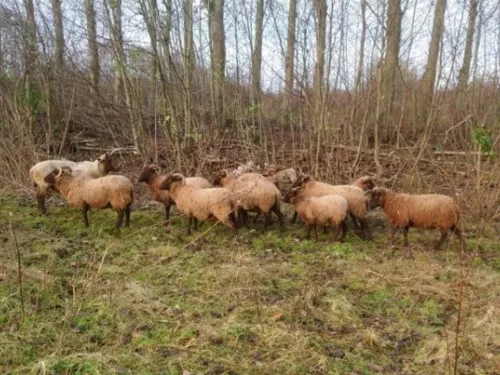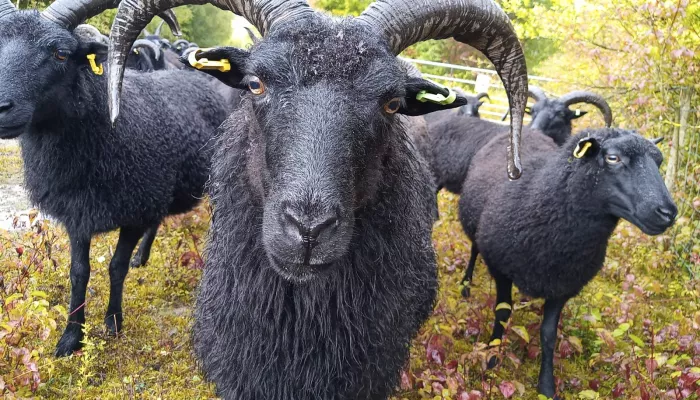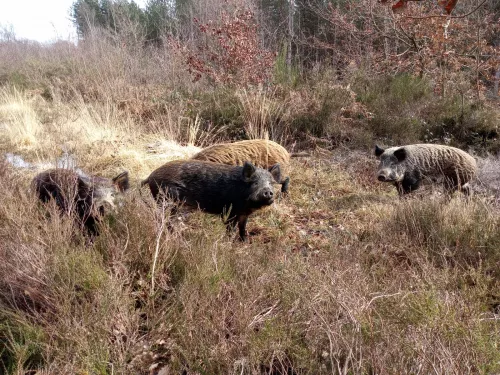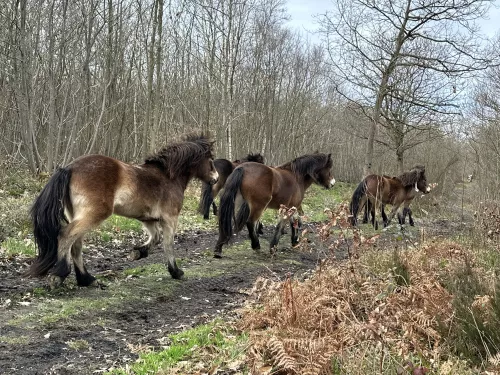
Manx sheep
A striking unusual milky coffee coloured-sheep, often with four horns and sometimes as many as six. This primitive breed is originally from the Isle of Man. Their fleece self-sheds but they can also be shorn.

An all-black compact mountain sheep with a taste for bramble and young scrub. Both the males and females have horns, although the males' horns tend to be wider and longer, creating an attractive curl, rather than the backward sweep of the females'.
As a more primitive breed, these sheep are very fast, preferring to starburst in multiple directions when chased, rather than flocking together in a big lump to protect themselves as lowland sheep do. This is because, in mountain terrain, staying together as a group is too complicated when faced with predators. Once they are separated, they hide in dense cover, such as the bottom of coppice trees or in crevices within rocks. Their black wool and faces provide excellent camouflage in the shade and gloom.
This breed produces a lot of milk for their size so they often provided a lifeline for mountain crofters when very little else was available. These days, the large amount of milk means they can raise two lambs with ease, even those cross-bred with bigger commercial types. It’s not unusual to see lambs bigger than their mum still being fed by her.

A striking unusual milky coffee coloured-sheep, often with four horns and sometimes as many as six. This primitive breed is originally from the Isle of Man. Their fleece self-sheds but they can also be shorn.

These pigs are as close as you can get to the wild boar and also, despite being a domesticated version of this wild species, share many of its traits.

Find out about Exmoor ponies and why we use them in conservation.